|
|
|
|
|
|
|
|
|
|
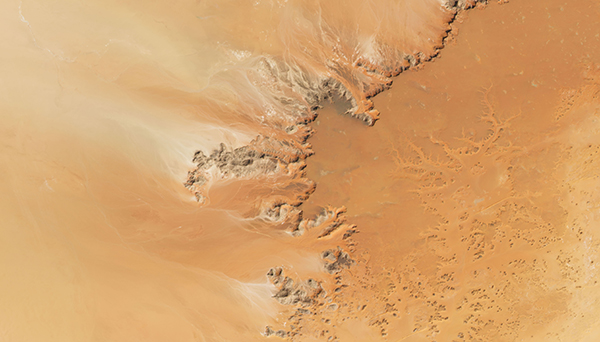 |
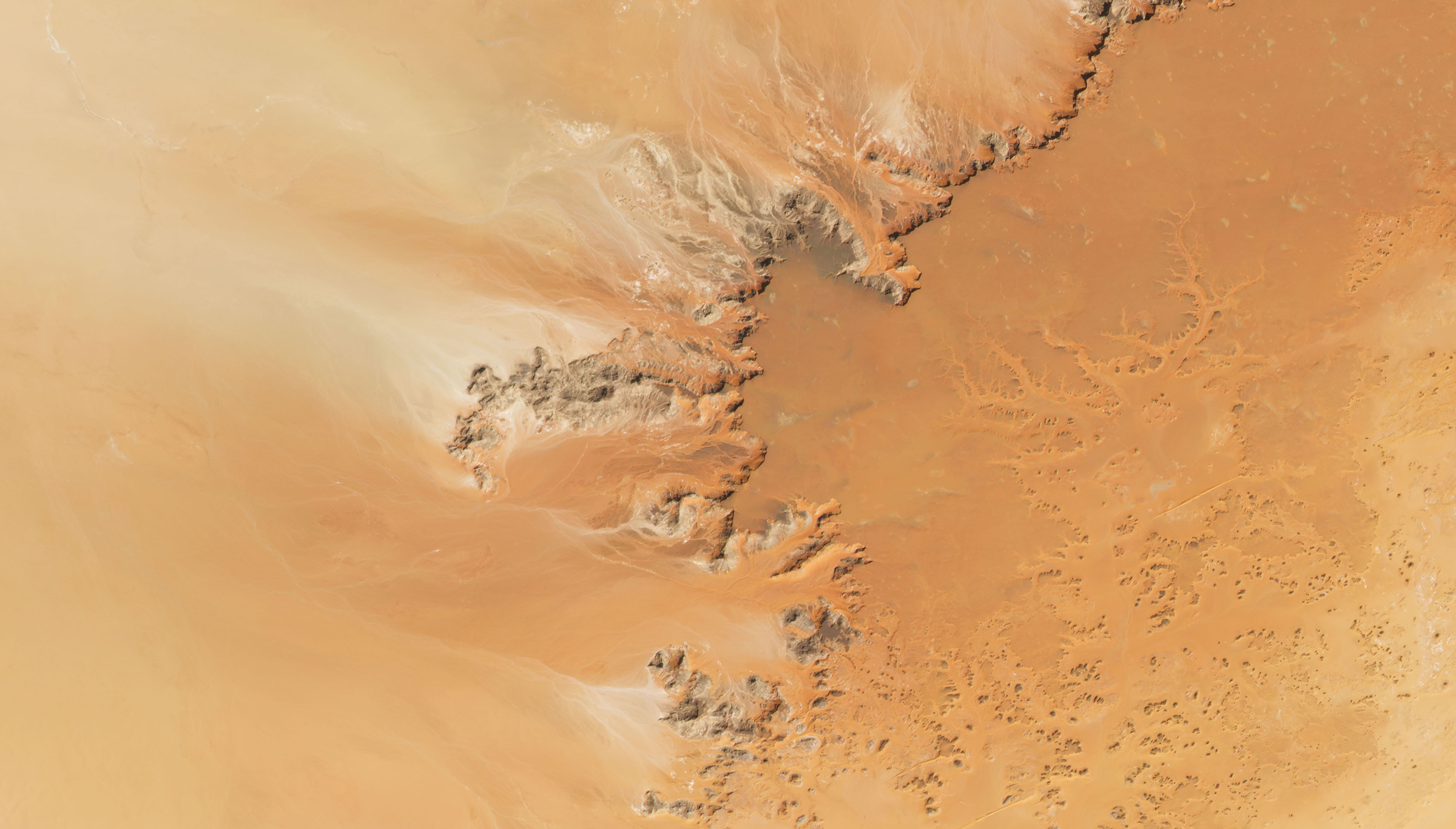 |
PlanetScope • Ennedi Plateau, Chad • February 6, 2021 |
In this week’s issue:
Earth’s growing deserts Villages on stilts Crystalline ice Having trouble viewing images? Then read this issue on Medium! |
|
|
|
|
FEATURE STORYDeserts
Deserts occupy about as much space on physical Earth as in our collective imagination. There are perhaps as many myths and stories about deserts as the grains of sand found within them. Well, maybe not that many. But it’s hard to understate the societal, spiritual, scientific, and symbolic importance of these dry lands. Yet as invaluable as they are, their expanding borders worry dry-phobics and fertile-soil-lovers alike. |
 |
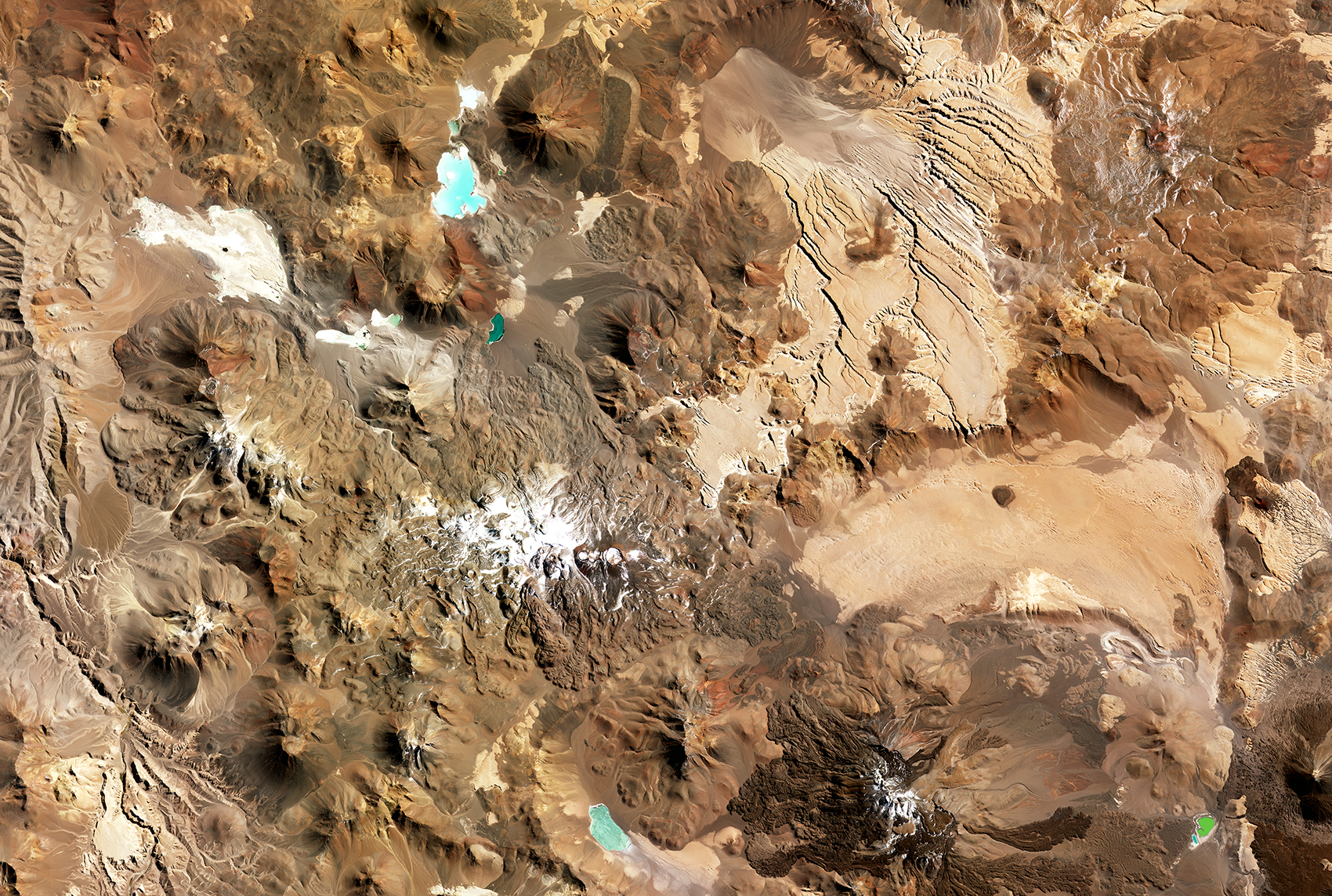 |
PlanetScope • Atacama Desert, Chile & Argentina • April 25, 2023 |
Deserts are extremely dry, arid environments that receive minimal rainfall and support sparse vegetation. They cover approximately one-third of Earth’s land surface and are generally characterized by harsh conditions. Temperature fluctuations are tremendous and wind and sandstorms are routine. Yet about a billion people have crafted a way of life in the shimmering dryness. |
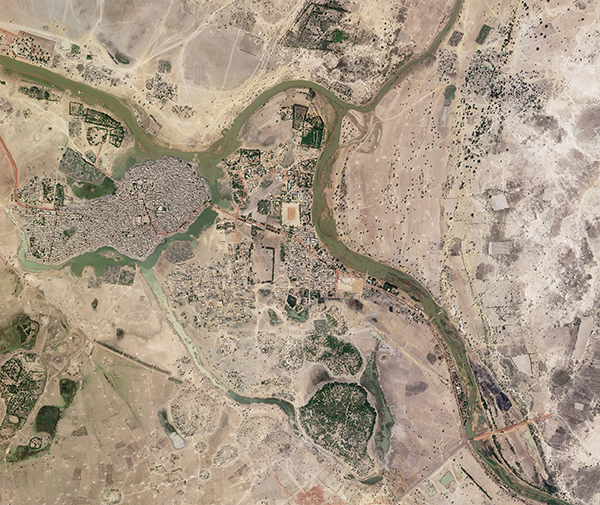 |
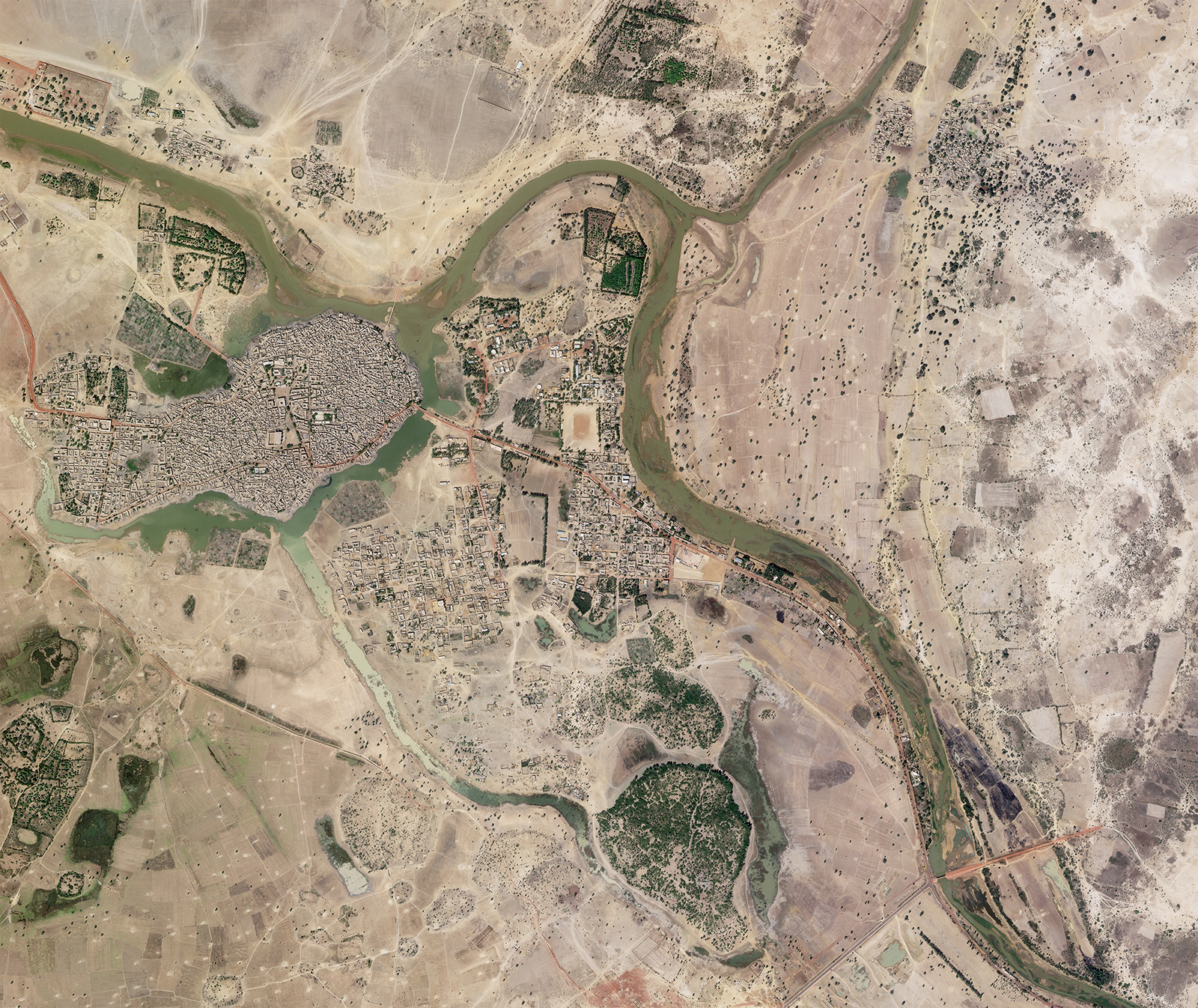 |
PlanetScope • Djenné, Mali • January 21, 2022 |
And that’s no accident. One person’s wasteland is another’s paradise. While some see empty space, others, like the Burners who attend Burning Man, see a place to experiment with new forms of community (and perhaps consciousness too). Renewable energy production, new capital cities, and extremely large telescopes have all dug their circular roots in the sand. |
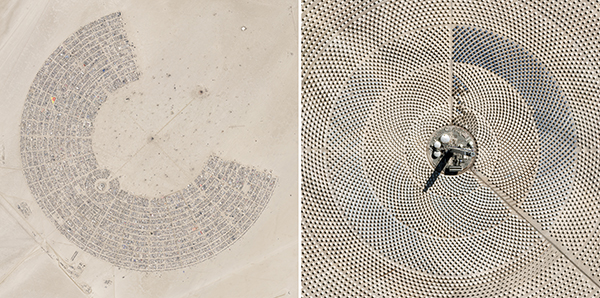 |
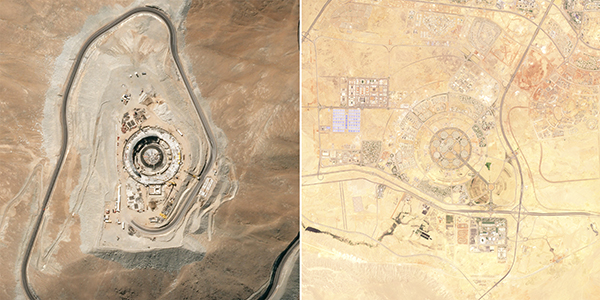 |
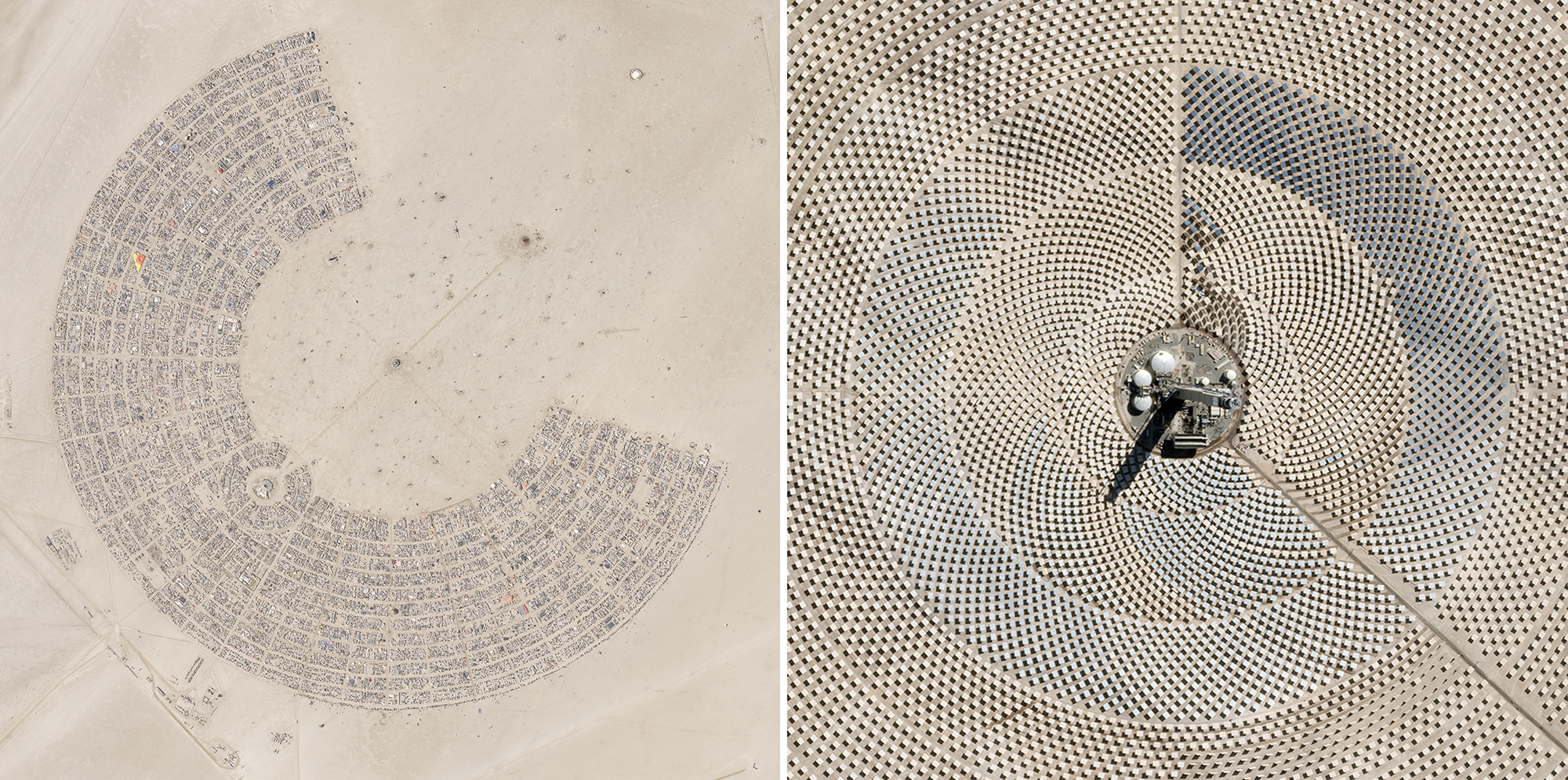 |
 |
TL: SkySat • Black Rock City, Nevada, USA • August 28, 2018 |
TR: SkySat • Cerro Dominador Solar Power Plant, Chile • May 13, 2020 |
BL: SkySat • Extremely Large Telescope, Cerro Armazones, Chile • February 1, 2022 |
BR: PlanetScope • New Administrative Capital, Egypt • May 31, 2023 |
Deserts, like the AA-battery-sized tarantula-hunting wasps that live in them, can captivate us with their beauty while also making us question the unfathomable processes that create such extreme and horrifying entities. And in this Schrödinger fashion, as beneficial as they are, their recent growth is concerning. |
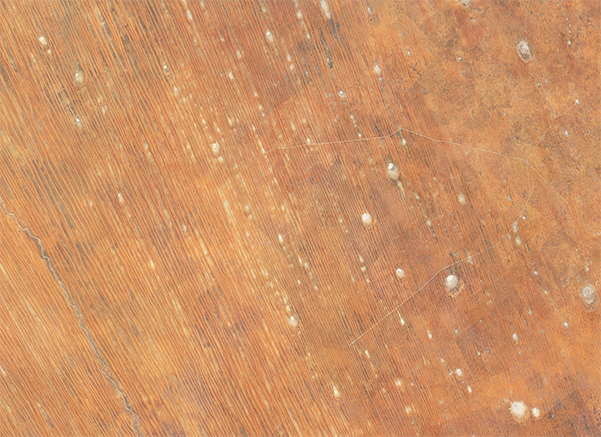 |
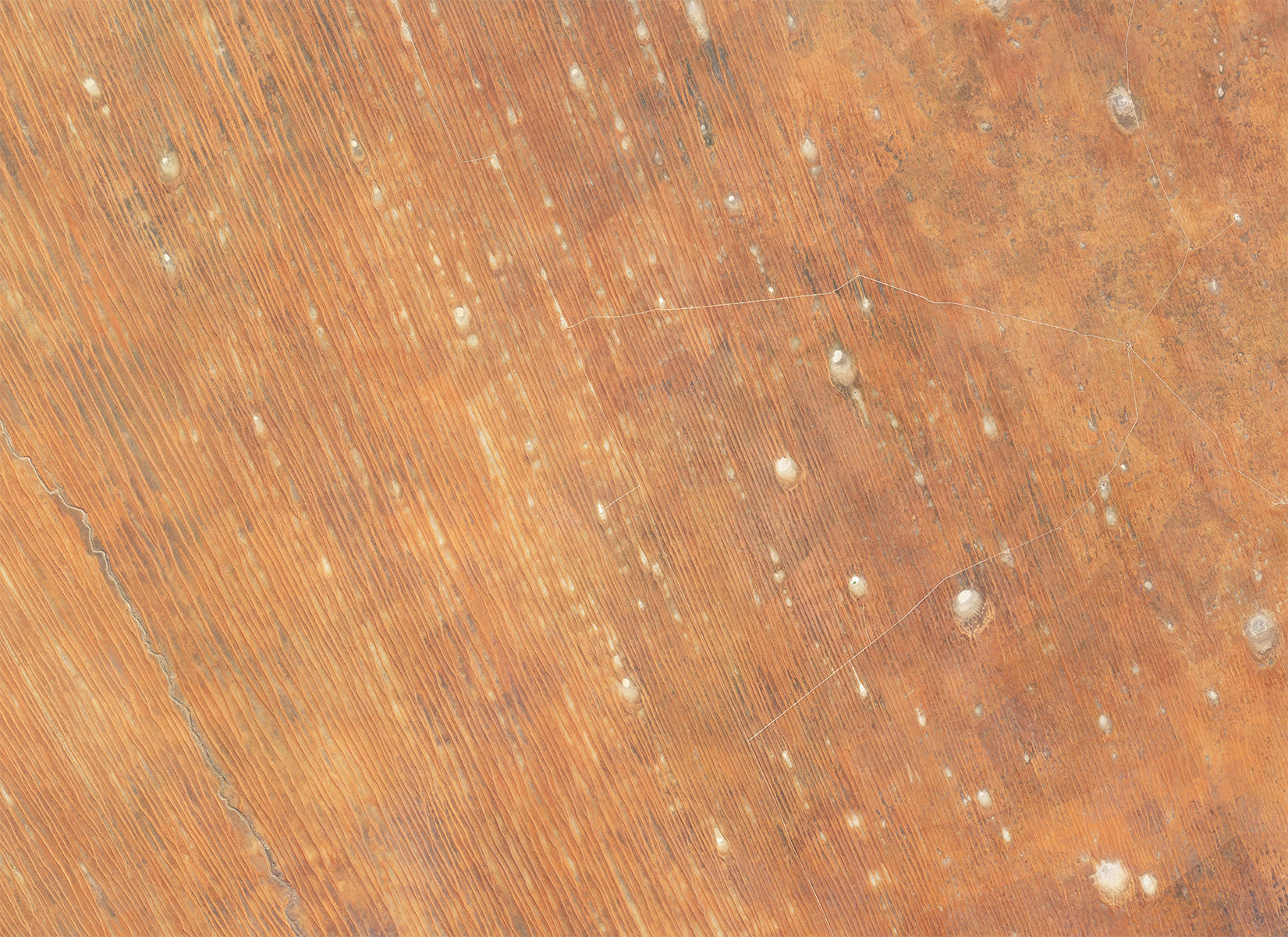 |
PlanetScope • Kalahari Desert, Namibia • April 28, 2023 |
It can be easy to think that the world’s deserts are definite spaces, confined like a sandpit in a playground. But they’re not. They flow, retreat, and grow like the seas. Around the world ambitious infrastructure projects are being built to defend against the encroaching sands. These “green wall” projects can span continents, like in Africa’s Sahel region below the Sahara, or be more local, like the vegetation planted alongside this road that spans China’s Taklamakan Desert. |
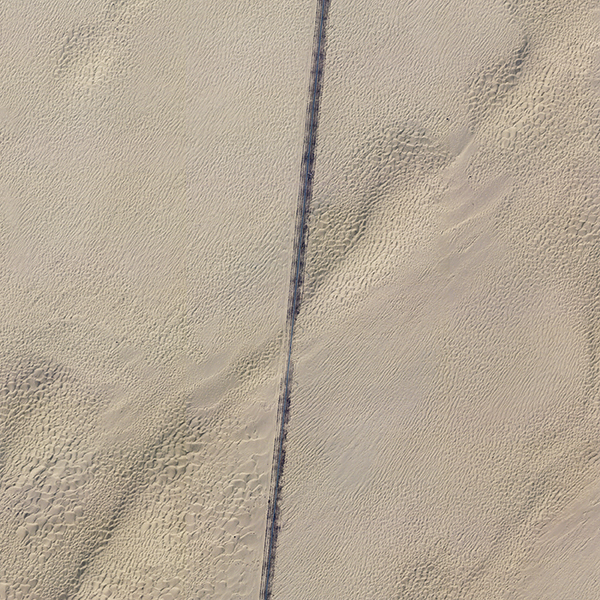 |
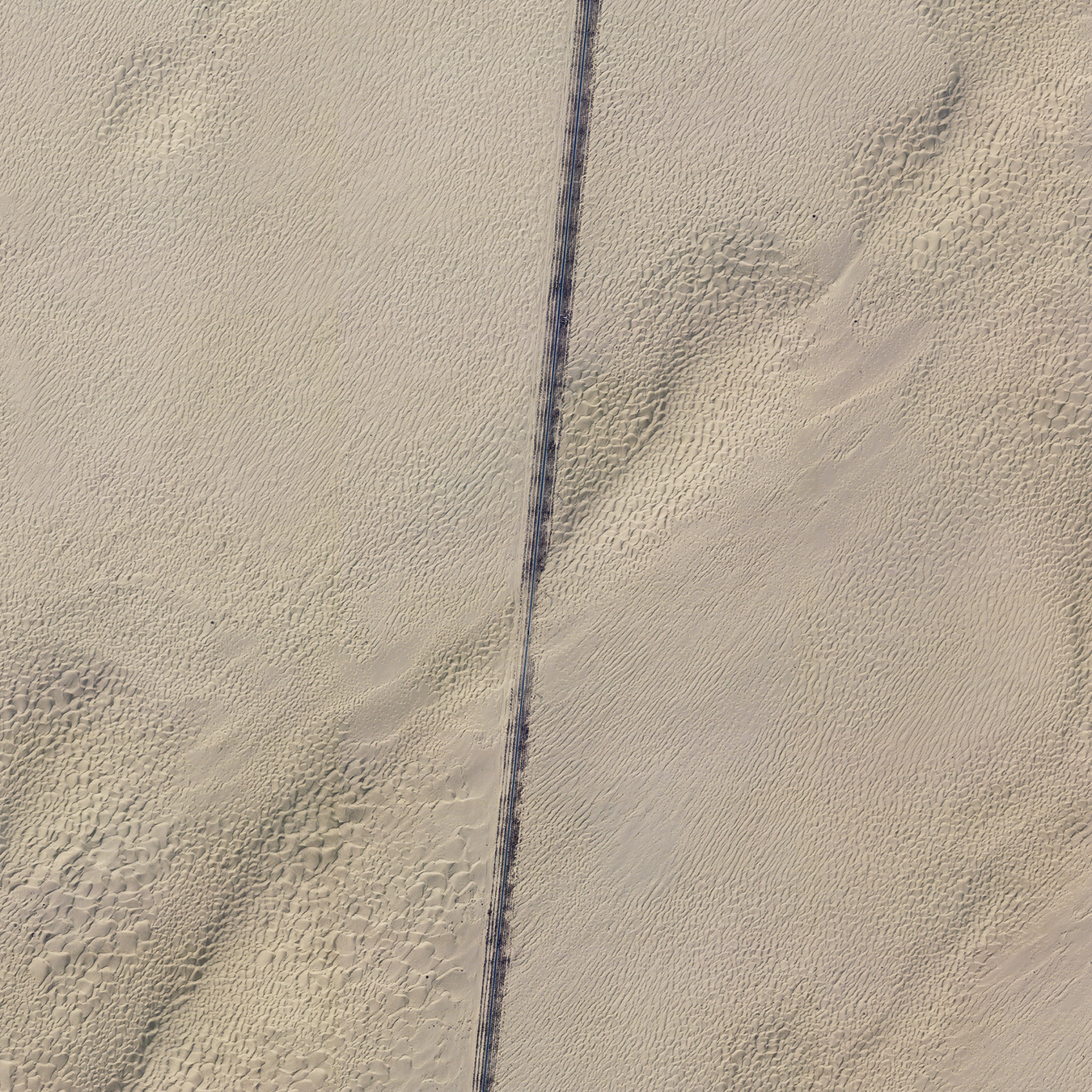 |
SkySat • Cross-Desert Highway, Taklamakan Desert, China • April 5, 2023 |
But like the edges of a desert, the process of desertification can be hard to define. And the front lines are more complicated than lines drawn in the sand. In the driest terms, desertification is the sustained degradation of once arable land and the loss of bioproductivity. It’s a natural process that’s accelerated by rising global temperatures and activities that overexploit the soil like intensive agriculture, urbanization, and mining. |
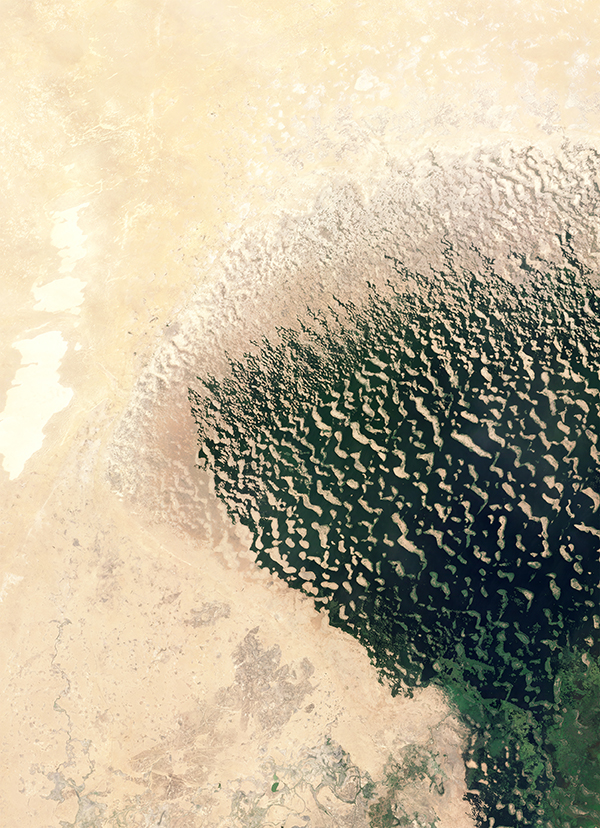 |
|
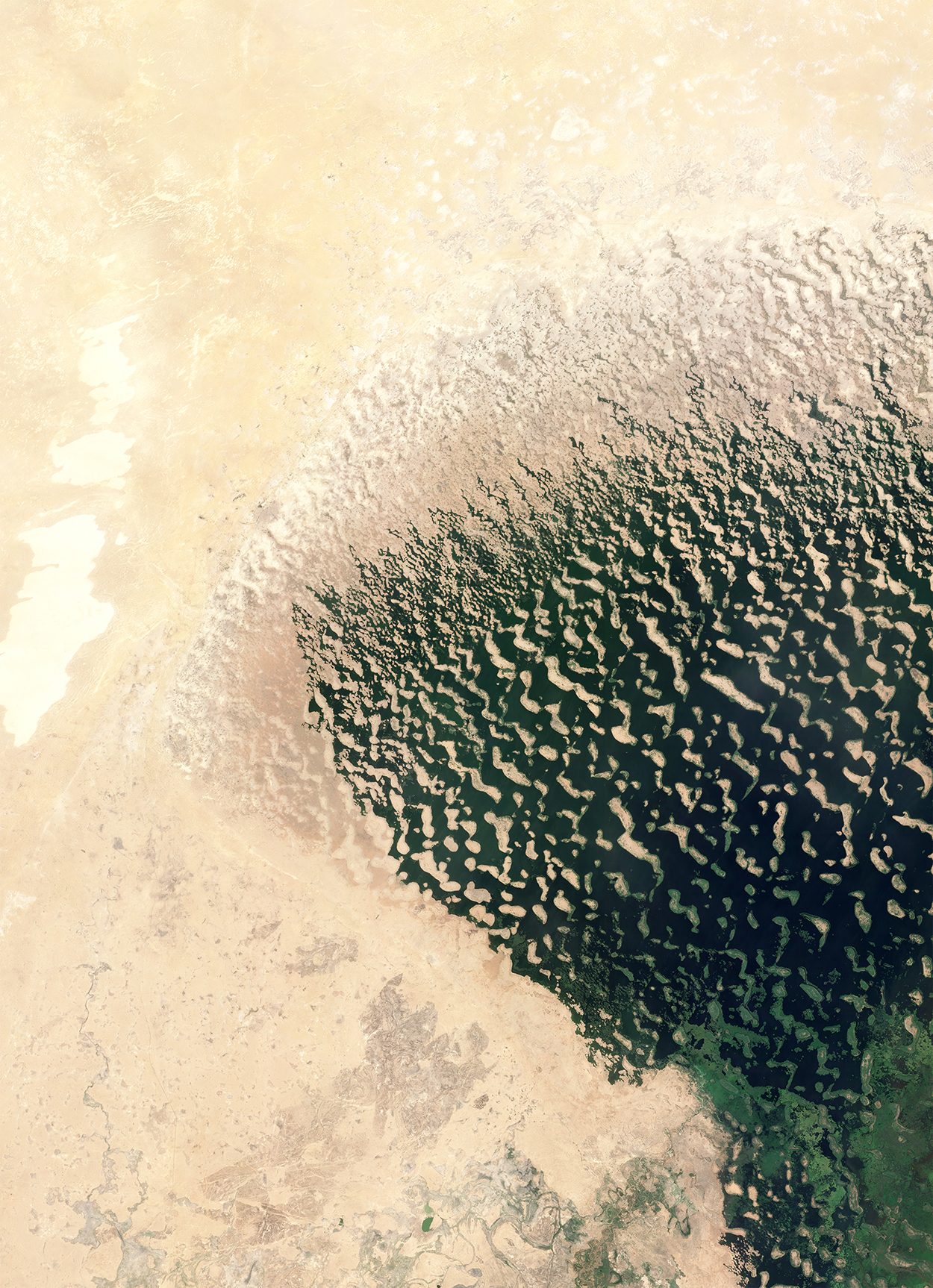 |
PlanetScope • Lake Chad, Chad & Niger & Nigeria • March 18, 2023 |
The good news is that local solutions can be implemented on-the-ground and at scale. Justdiggit arms subsistence farmers with shovels to dig semi-circular pits called bunds that help capture and retain rainwater instead of it washing away on the harder upper layer of cracked dirt. The bunds turn green as they catch water, and the growing vegetation helps reverse desertification and restore the land. |
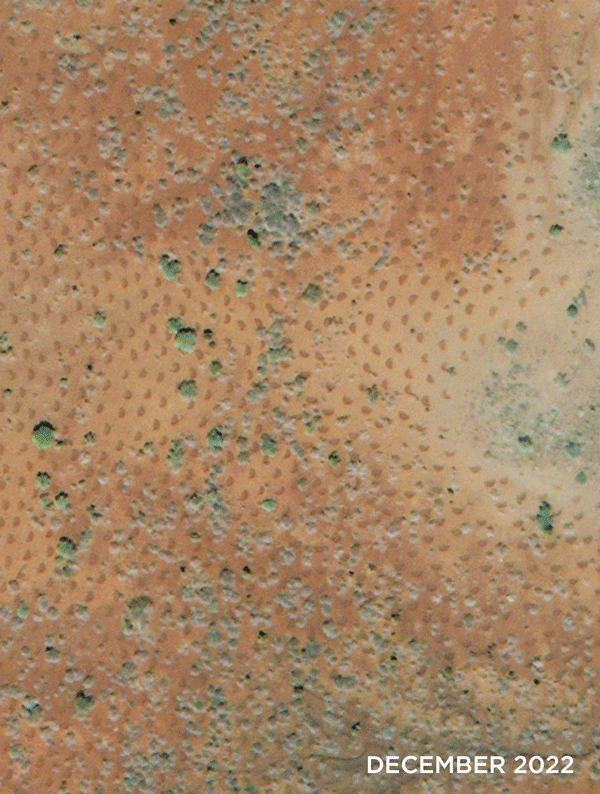 |
 |
SkySat • Bunds in Rombo, Kenya • December 3, 2022 - May 15, 2023 |
 |
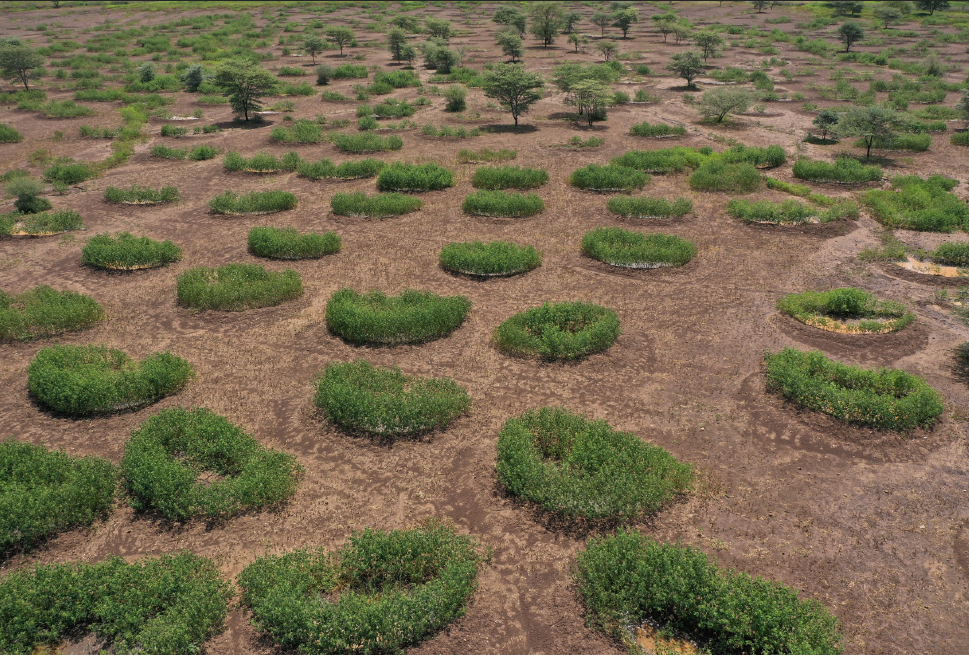 |
Bunds up-close • Courtesy of Justdiggit |
We used to build great walls for nomadic invaders. Now we build green ones for the encroaching dryness. Deserts have always been one part threatening and one part tabula rasa. It’s fitting, then, that during this period of looming peril, deserts may provide the space needed to build new solutions. We’ll just have to wait and find out if it’s a mirage or if it’s an oasis. |
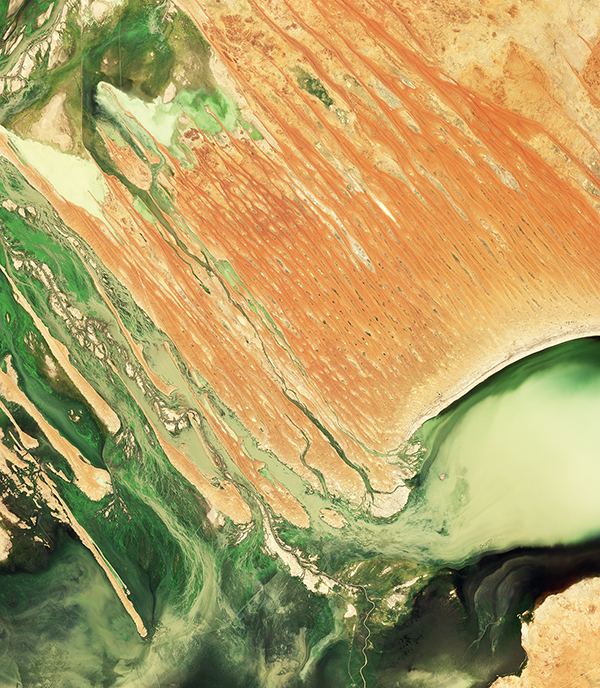 |
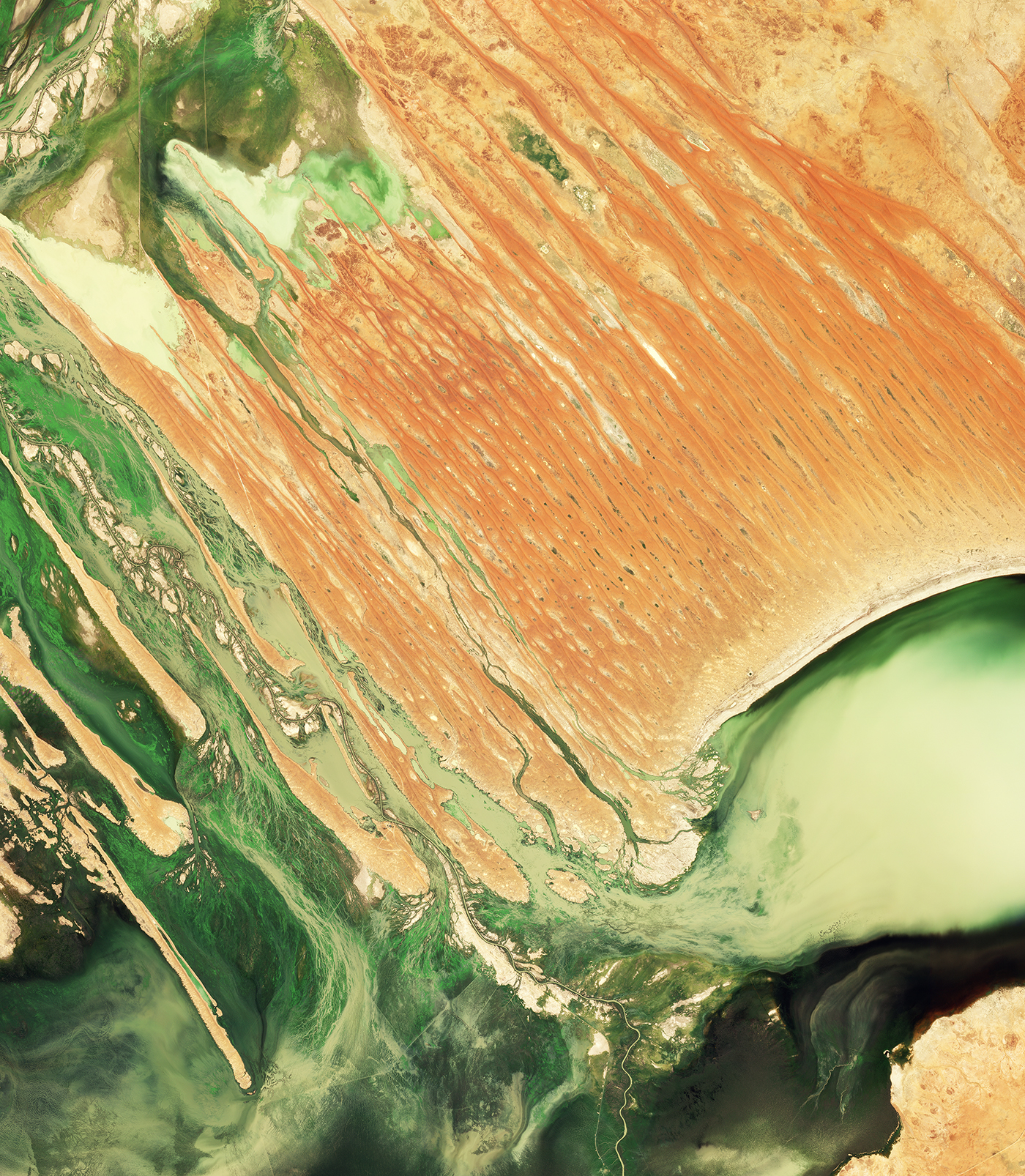 |
PlanetScope • Bedourie, Queensland, Australia • February 2, 2023 |
Bonus: The largest desert on Earth is, perhaps strangely, Antarctica. The massive continent receives barely any rainfall a year and the only vegetation it supports is moss and algae. We felt remiss not to include it in the issue, but it also didn’t exactly fit with the others. |
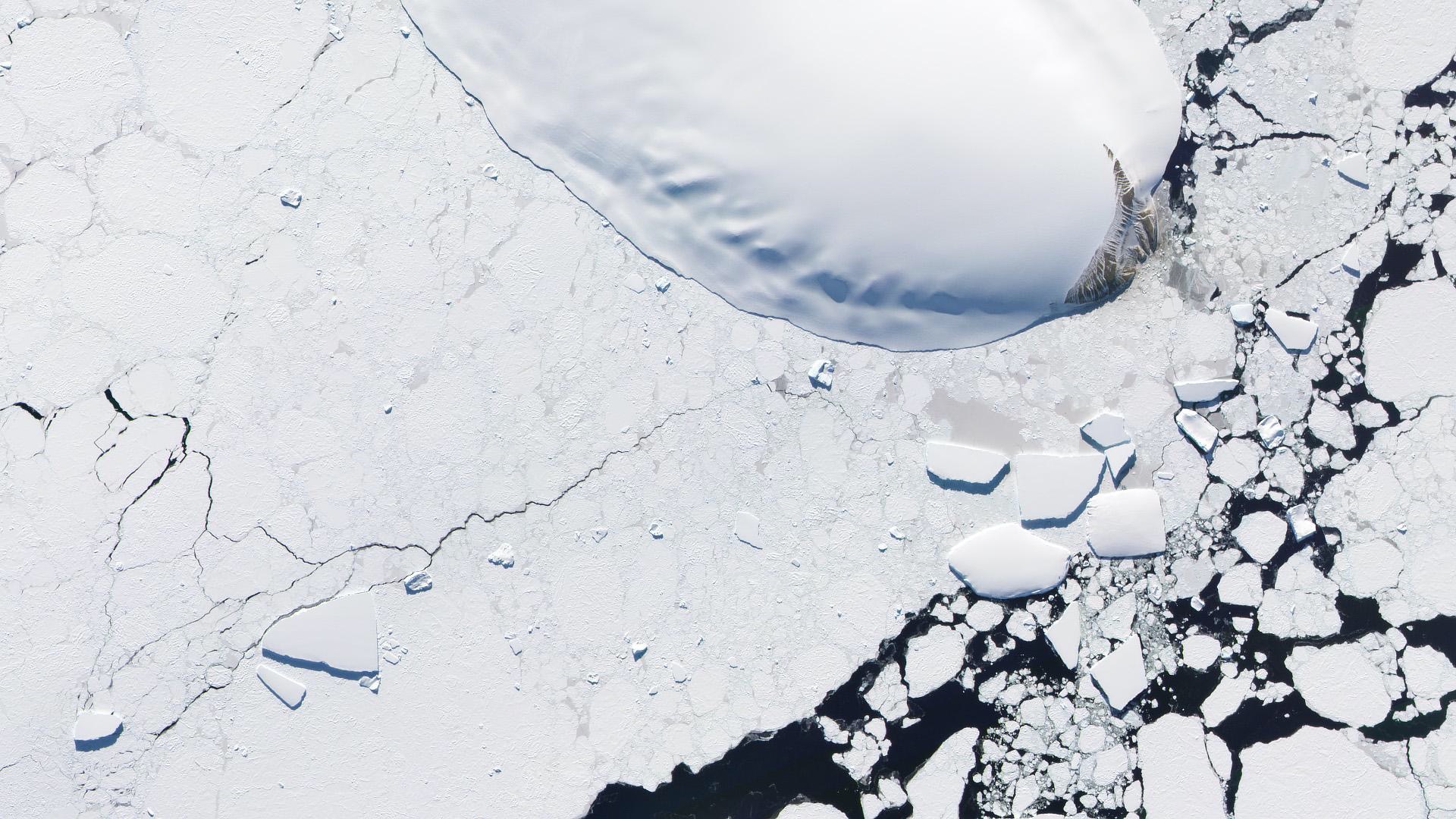 |
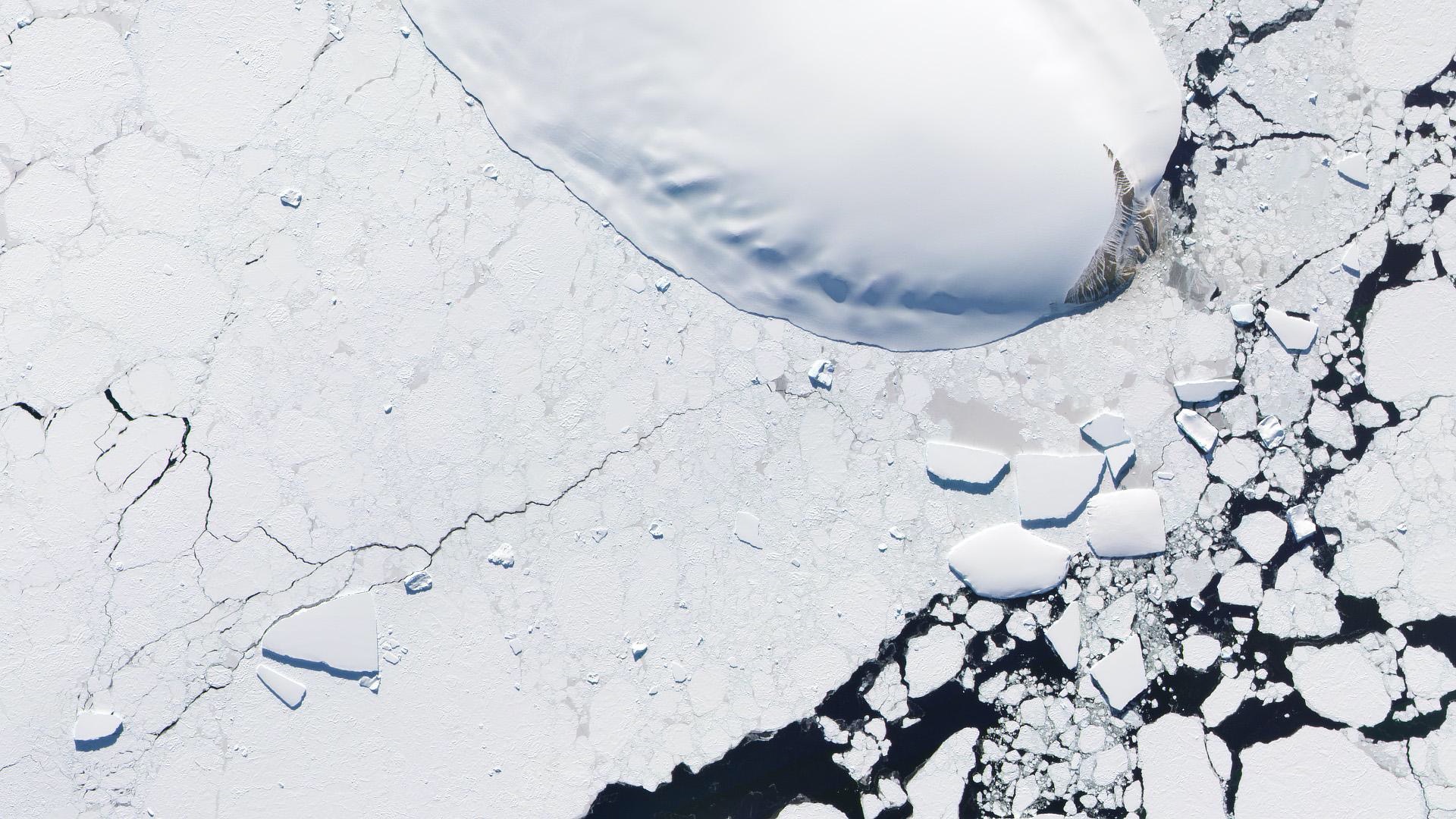 |
PlanetScope • Robertson Island, Antarctica • April 2, 2019 |
|
|
|
|
|
|
|
|
|
|
|
REMOTE SENSATIONSFloating Villages
Some communities have taken lakeside life to the next level. Literally. Some towns are built to work with the water, and since we had a surplus of lake images from last week, here’s three more of them.
Fishermen live atop floating houses in Tonlé Sap, Cambodia. Each year the area’s forests flood, but unusually dry conditions are lessening the amount it receives.
|
 |
 |
PlanetScope • Tonlé Sap, Cambodia • August - December, 2022 |
The low-lying Dutch are masters of manipulating water. And towns like Vinkeveen show just how far this proficiency goes. Rows of houses jut out like spokes of a wheel into a nearby lake. |
 |
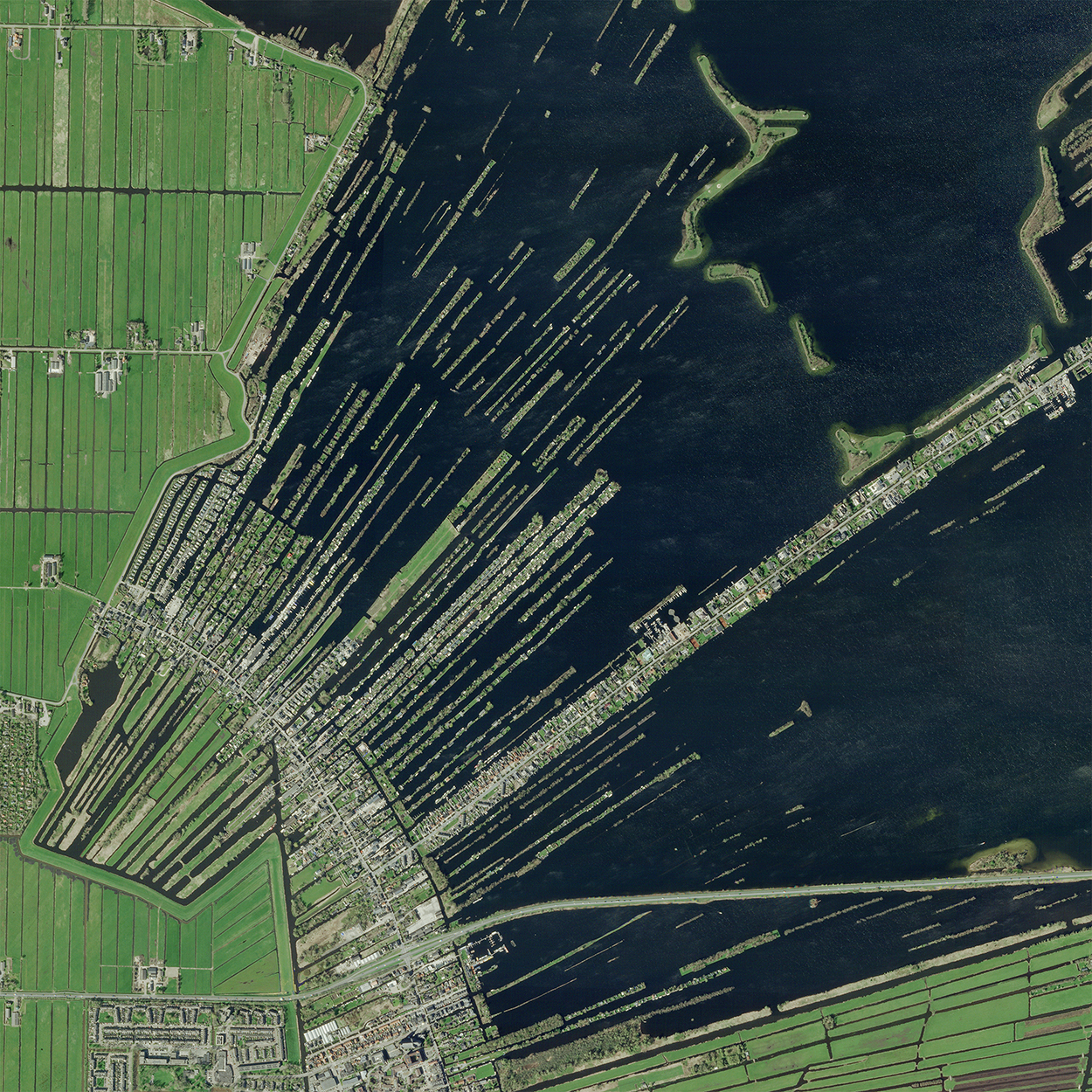 |
SkySat • Vinkeveen, The Netherlands • April 11, 2023 |
Nearly 300 years ago, the Tofinu settled on Lake Nokoue to evade capture by another tribe. They never left, and now its 20,000+ residents live on the water and canoe between the town’s buildings. |
 |
 |
SkySat • Ganvie, Benin • March 14, 2023 |
|
|
|
|
|
WHAT IN THE WORLDCrystalline Ice
We asked ChatGPT what the opposite of a desert was and it said an oasis. Which feels… perhaps cheap. So we don’t agree, plus our editor wanted to shoe-horn this crystalline image in. So here’s our take on the opposite of dryness: a layer of frozen water atop a cerulean blue lake. |
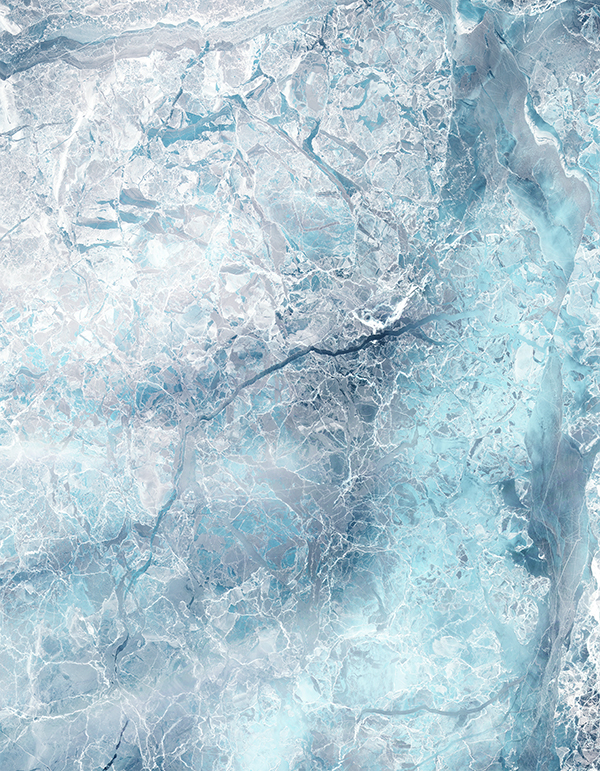 |
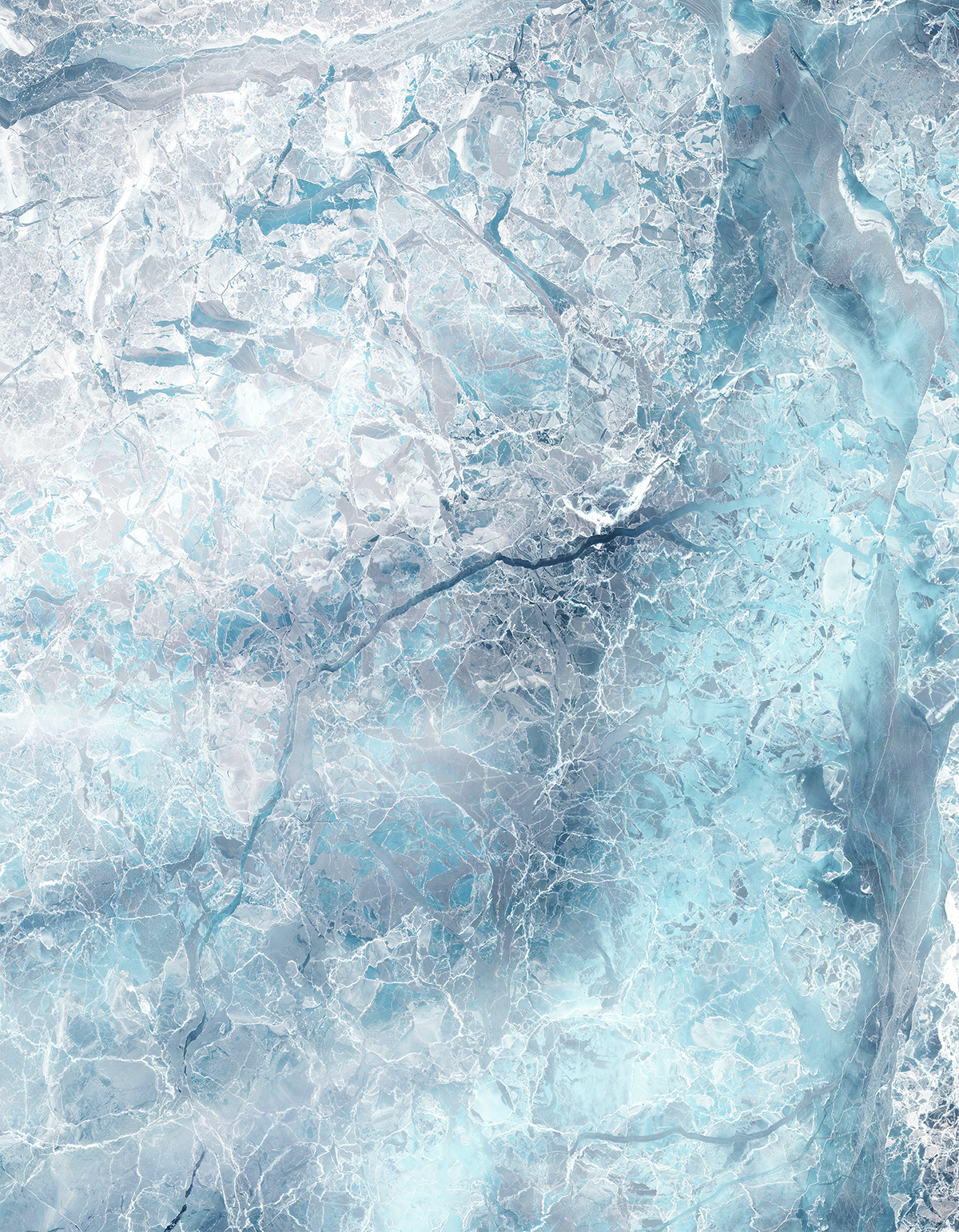 |
PlanetScope • Lake Baikal, Russia • April 20, 2022 |
|
|
|
|
|
Weekly Revisit
Last week we dipped our toes in the world’s lakes and shared our perspective on the wildfire haze that covered parts of North America. So check it out in case you missed it and read more stories from the full archive if you’re extra curious. |
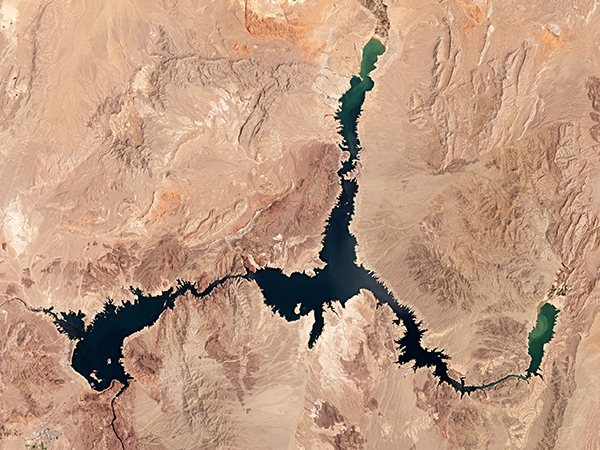 |
PlanetScope • Lake Mead, Nevada, USA • June 12, 2021 |
|
|
|
|